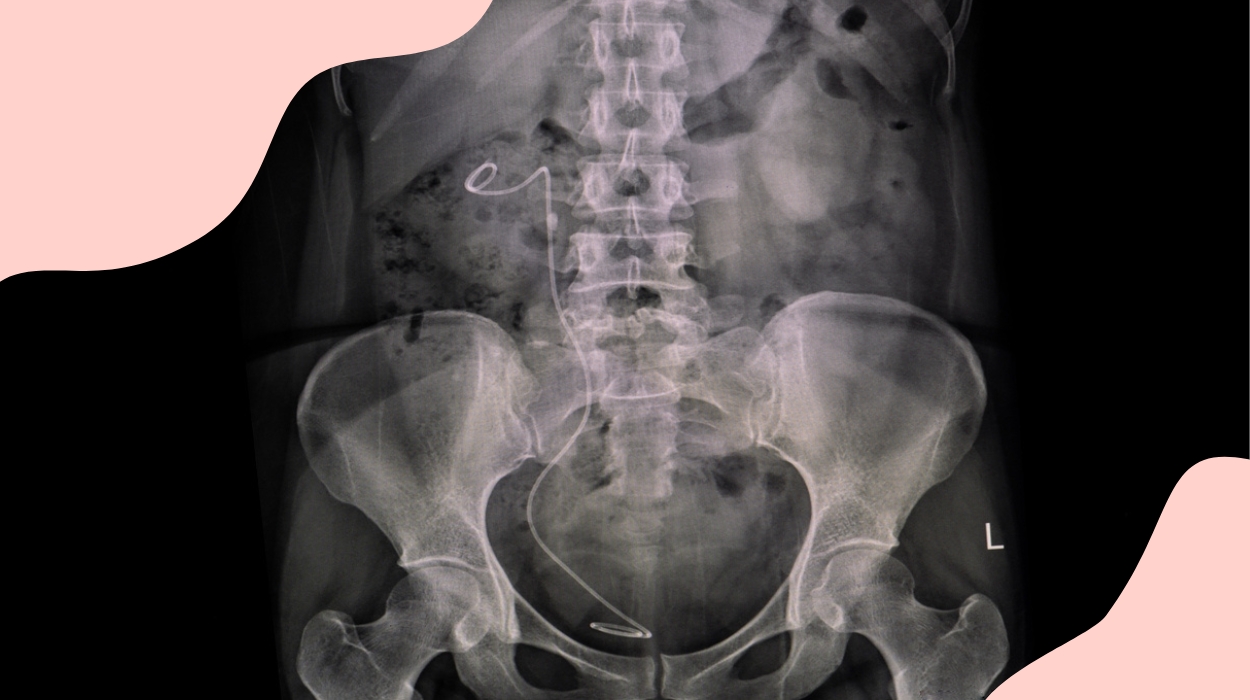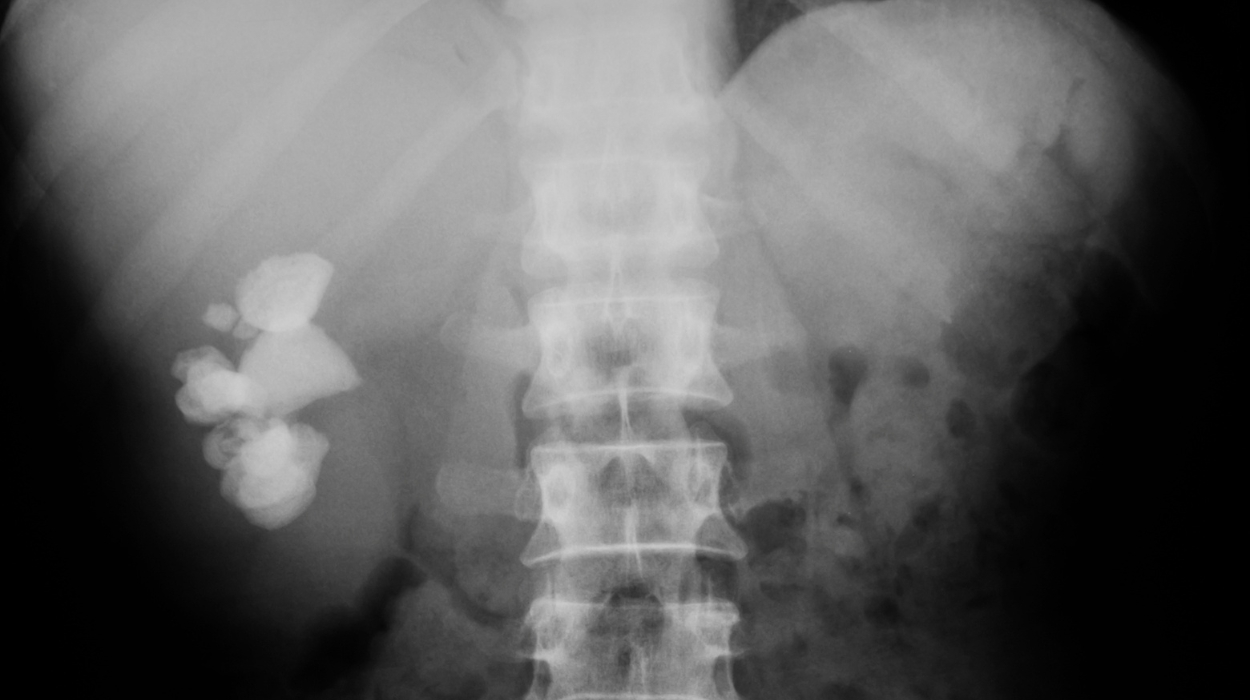 Expert's opinion
Expert's opinion
Expert's opinion
The article is a subjective view on this topic written by writers specializing in medical writing.
It may reflect on a personal journey surrounding struggles with an illness or medical condition, involve product comparisons, diet considerations, or other health-related opinions.
Although the view is entirely that of the writer, it is based on academic experiences and scientific research they have conducted; it is fact-checked by a team of degreed medical experts, and validated by sources attached to the article.
The numbers in parenthesis (1,2,3) will take you to clickable links to related scientific papers.
Can You Pass A Kidney Stone With A Stent In? What To Know & Expect 2024

A stent placed to help maintain the flow of urine while treating kidney stones is known as a ureteral stent. The term ureteral is used because the stent runs the length of the ureter, the structure that connects the kidney to the bladder. If you have had a ureteral stent placed or your doctor has suggested one, you may have some questions.
- What is it like to have the stent placed and removed?
- Which symptoms are expected while the stent is in place?
- How long is the stent left in?
- Can kidney stones be passed with the stent in?
We will discuss each of these topics, along with some tips to make the process more comfortable!
Can You Pass A Kidney Stone With A Stent In Place?
The most common reasons for placing ureteral stents are:
- Resolving an obstruction of urine flow caused by a kidney stone.
- Maintaining urine flow after a procedure to remove or reduce the size of kidney stones.
While the stent does occupy space in the ureter, and its purpose is not specifically to pass a stone, it is possible to pass a stone[1] while it is in place. Your ability to pass the stone with a stent in place will depend on the size of the stone. Unfortunately, discomfort associated with ureteral stents is common, but the stent is important because it prevents potential kidney damage and other complications caused by an obstruction of urine flow.
How Stents Help Kidney Stones
Maintain Urine Flow After A Procedure
There are several types of procedures available to help remove kidney stones or break them into smaller stone fragments. A healthcare professional (most likely a urologist) will help you determine the most appropriate option.
Procedures may be considered if the passage of the stone was unsuccessful with the help of medication alone after four to six weeks or if intervention is suggested sooner based on individual factors. These factors may include the size, density, location, and number of stones.
The three procedures used most frequently are:
Extracorporeal Shock Wave Lithotripsy
Extracorporeal means “outside the body.” This is a non-invasive approach using ultrasound shock waves to break large stones into smaller pieces (“litho” refers to stone, “tripsy” refers to crushing). The amount of time it takes to pass kidney stones depends on size, and the smaller the stone size the more easily they are passed.
Shock wave lithotripsy can be applied to stones in various locations along the ureter.[2] Lithotripsy is associated with fewer complications, but ureteroscopy increases the rate of becoming stone-free after one procedure.
Ureteroscopy
This is an outpatient procedure, meaning you can typically go home the same day. Ureteroscopy is often performed under general anesthesia. An incision is not needed. A camera will be guided through the urethra and up the urinary tract to allow for stone retrieval. This procedure is typically performed for ureteral stones composed of a material that would not respond well to shock wave lithotripsy located in the proximal ureter (near the kidney) or kidney.
Percutaneous Nephrolithotomy
Percutaneous means “through the skin.” This is a minimally invasive procedure with a small incision made in your back. The incision allows for the surgical removal of stones without needing “open surgery.” An overnight stay for recovery is recommended, and many patients feel well enough to return to work after a week or two. Surgical removal is reserved for patients unlikely to succeed with lithotripsy or ureteroscopy. This may be the case with larger or multiple kidney stones.
A kidney stone stent may or may not be recommended after any of these procedures, depending on individual needs. Your doctor will discuss the potential risks and benefits of ureteral stent placement so a shared decision can be made. For many individuals, a stent may not be necessary. The need for a stent is defined by kidney function and previous ureteral injury, among other factors.
Resolve An Existing Obstruction Of Urine Flow
Obstruction of urine flow can occur to varying degrees and is associated with flank pain (mid-lower back, near your side). If you are experiencing any of the following symptoms, you should consider visiting an emergency room for more immediate care:
- Difficulty producing urine.
- Blood in your urine.
- Severe pain that doesn’t respond to over-the-counter pain medications.
- Nausea and vomiting.
- Fever and chills.
What To Expect When A Ureteral Stent Is Placed

- An X-ray or ultrasound may help your doctor locate a blockage if needed.
- A scope is guided through the urethra.
- A very thin string called a guidewire is moved into place first.
- The guidewire is used to move the stent into position.
- Once placed in the ureter, the stent will allow for the continuous flow of urine from your kidney to your bladder while a stone passes or your ureter heals.
At Home After Stent Placement: What To Know
How Long The Stent Stays In
Your doctor will discuss your specific plans for follow-up after the procedure. The stent is removed quickly to prevent complications[3] and minimize side effects while maintaining urinary flow throughout stone passage or ureteral healing. Depending on individual factors, including the procedure performed for the kidney stone, the stent may remain in place anywhere from a few days to a few weeks.
Normal Symptoms
Ureteral stents do cause side effects[4] while they are in place regardless of the size of stent used, and these can be pretty common:
Urinary Frequency
Urinary frequency refers to feeling like you need to use the bathroom often. The presence of the stent in your bladder can cause this sensation, meaning your bladder senses it is full and sends signals to your body that it needs to be emptied.
Flank Pain
Pain in your lower back, close to your side, can be caused by pressure in different areas of the ureter. This can be either because of a kidney stone or the stent itself.
Blood In Urine
Some blood in the urine may be expected, particularly for the first few days after stent placement. It becomes more concerning if bleeding does not stop or develops after the stent has been in place for several days.
When To Call Your Doctor
It is essential to call your doctor if you develop any of the following signs or symptoms:
- Pain that does not respond to over-the-counter or prescribed medications.
- Pain associated with nausea and vomiting.
- Cloudy urine.
- Fever or chills.
These can be signs of a urinary tract infection, which should be treated immediately.
What You Can Do To Help Manage Symptoms
There are strategies for minimizing urinary symptoms and passing kidney stones more quickly. Kidney stone pain can last as long as it takes for the stone to pass. There are some methods to help speed this process up:
- Medications, like alpha-blockers: These relax the ureters to allow for easier passage.
- Home remedies, like apple cider vinegar or drinking citrus juice: These are used to alter the pH of urine, with the goal of dissolving kidney stones. Some individuals use apple cider vinegar gummies, such as Goli gummies. The use of lemon juice or orange juice is also potentially helpful.
Pain can be relieved with either prescription medication or over-the-counter non-steroidal anti-inflammatory drugs (NSAIDs) such as ibuprofen. NSAIDs are safe for many people but should be avoided in those with a history of stomach ulcers or chronic kidney disease. If you are unsure whether you can safely take an NSAID, it is helpful to ask your doctor or pharmacist.
If you are experiencing burning with urination and have a string attached to your stent for easy removal, you can use Azo (phenazopyridine) to help manage painful urination for up to two days when used over the counter. Note that your urine may be orange which is normal while taking phenazopyridine.
If you do not have a string and it burns when you use the restroom, consider calling your doctor. This burning sensation may be a sign of a urinary tract infection.
What It Is Like When A Ureteral Stent Is Removed
- A local anesthetic is applied.
- Similar to when the stent was placed, a camera may be used to remove the stent. The doctor will guide this camera through the urethra into your bladder.
- The stent is pulled out through the urethra.
- This process will likely take several minutes.
Conclusion
Stents are placed in the ureter to help keep the ureter open and ensure urine from the kidney can make its way to your bladder. While potentially uncomfortable, these stents can prevent dangerous obstructions from occurring and can help your ureter heal if needed.
Kidney stones can still be passed with a stent in place, but your ability to do this will depend on the size of the stone. Attending follow-up appointments with your doctor is crucial for monitoring your status after treatment for kidney stones and helping to establish an individualized plan to prevent future stones from developing.
Frequently Asked Questions
Restrictions may vary from person to person. Generally, you are able to resume work and most physical activity (unless you perform heavy lifting) within about 24 hours. Avoiding sex for about a week is often recommended to limit your risk of developing a urinary tract infection.
+ 4 sources
Health Canal avoids using tertiary references. We have strict sourcing guidelines and rely on peer-reviewed studies, academic researches from medical associations and institutions. To ensure the accuracy of articles in Health Canal, you can read more about the editorial process here
- Baumgarten (2017). Spontaneous passage of ureteral stones in patients with indwelling ureteral stents. The Canadian journal of urology, [online] 24(5). Available at: https://pubmed.ncbi.nlm.nih.gov/28971791/.
- Dzelaludin Junuzovic, Jelena Kovacevic Prstojevic, Munira Hasanbegovic and Zahid Lepara (2014). Evaluation of Extracorporeal Shock Wave Lithotripsy (ESWL): Efficacy in Treatment of Urinary System Stones. [online] 22(5), pp.309–309. doi:https://doi.org/10.5455/aim.2014.22.309-314.
- Geavlete, P., Georgescu, D., Mulțescu, R., Stanescu, F., Cozma, C. and Geavlete, B. (2021). Ureteral stent complications – experience on 50,000 procedures. Journal of Medicine and Life, [online] 14(6), pp.769–775. doi:https://doi.org/10.25122/jml-2021-0352.
- Urologyresearchandpractice.org. (2022). Comparison of ureteral stent diameters on ureteral stent-related symptoms: A systematic review and meta-analysis. [online] Available at: https://urologyresearchandpractice.org/en/comparison-of-ureteral-stent-diameters-on-ureteral-stent-related-symptoms-a-systematic-review-and-meta-analysis-133789.



